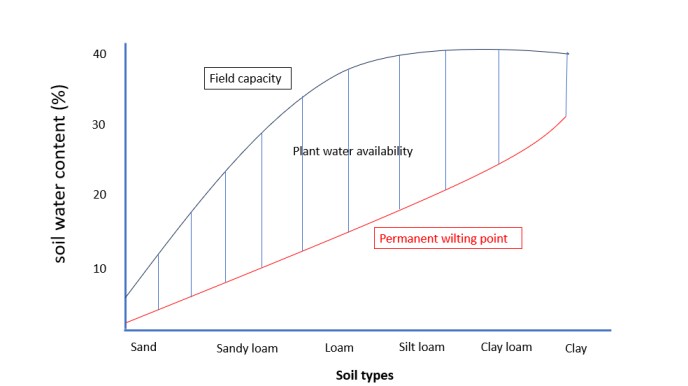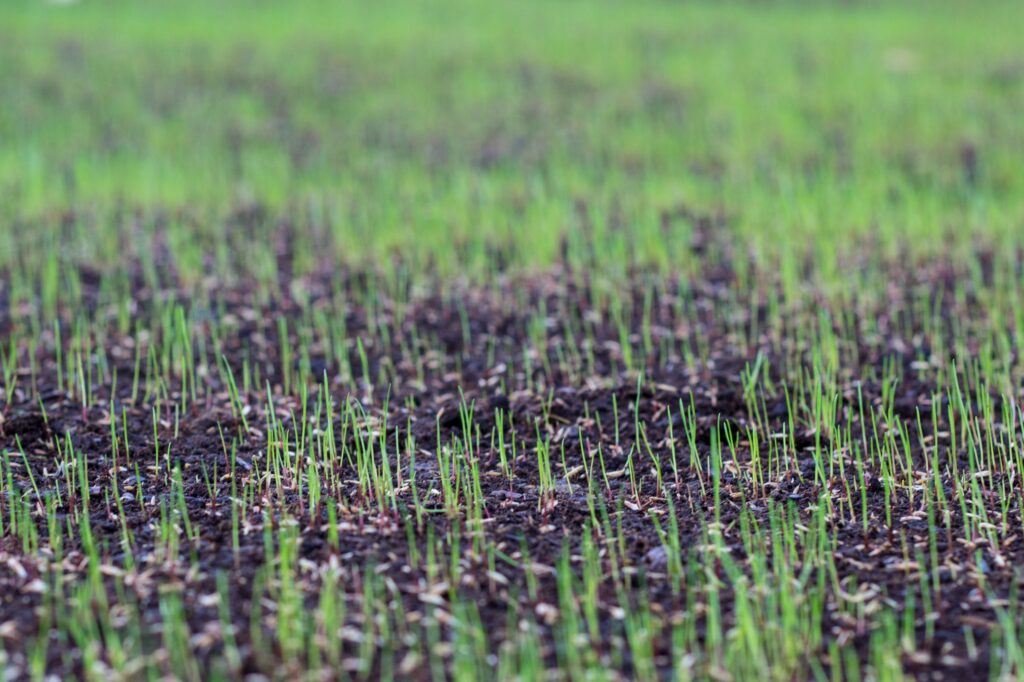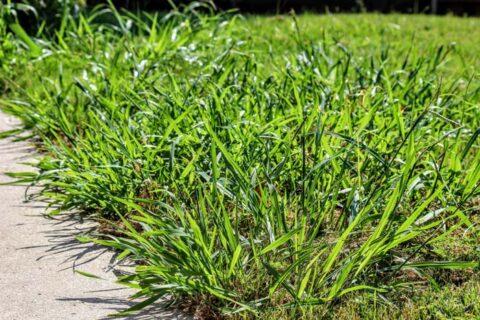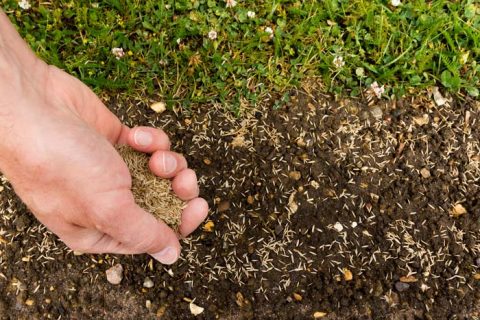How Often to Water a New Lawn: What are the Essential Tips for Healthy Growth?
How often should you water new grass seed? That depends. The general rule is to keep your new grass watered often so it remains moist but not oversaturated.
The amount of water needed depends on soil, grass type, and growing conditions. Sandy soils, for example, have a low total water-holding capacity, compared to soils high in clay. Understanding your soil’s characteristics is key in creating an efficient watering schedule that meets your lawn’s specific needs.
Now, let’s explore the specifics of new grass seed watering to ensure your lawn thrives from root to tip.
How Often to Water a New Lawn
Your journey begins even before planting. Here are a couple of tips to keep in mind – the scale of project will dictate exactly how much more work you have to do:
- Choose the time of year to plant your seed. The best time of year to establish a new lawn is late summer through early fall.
- Prepare the soil by pre-moistening the seedbed to a depth of 6 to 8 inches of water. This will ensure your seed grows in a hospitable environment.
After planting grass seed, water it regularly. This will create a good environment for germinating grass seed.
In the Northeast US, watering a new lawn requires precision and adaptability due to rapidly changing conditions.
Initially, new grass seed demands consistent moisture to germinate. Fail to meet this need and you risk growing a patchy lawn. Provide too much water, and you may drown or wash away your seedlings.
The golden rule of thumb is to keep the topsoil of newly seeded areas moist, not drenched. To water effectively, check and adjust your irrigation system daily, especially in sandy soil which drains quickly.
Yet, knowing how to water new grass seed also involves anticipating and responding to the weather. A burst of heat or a gusty day can whisk away moisture. In turn, this may necessitate several light waterings to compensate.
To help understand, the table below provides a general sense of how much water grass likely needs at different growth stages. Again, adjust accordingly.
| Grass Seed Growth Stage | Watering Frequency | Watering Depth |
| Germination | Daily light waterings | Top 1-2 inches of soil |
| Seedling | 2-3 times per week | Top 4-6 inches of soil |
| Established Lawn | 1-2 times per week | 6-8 inches of soil |
Do not let the top 1/2 of soil dry out before your grass is at least an inch tall. Once your grass matures past an inch, you can slowly revert to a strategy that focuses less on frequent watering and more on deep soakings for root development.
Tailor Watering Schedules to Soil Types in the Northeast United States
Knowing the needs of different soil types is crucial, from sandy soil that drains well to heavy clay soil that does not. This will help you answer important questions about your watering schedule. You will learn how often to water grass seed, how much water it needs, and how long to water it.
Sandy soils have poor water retention because they have low surface area. This causes them to quickly lose moisture and need more frequent irrigation.
However, if you apply the same regimen to a lawn growing in loam, silt loam, or clay, the grass will react differently (possibly poorly). For example, clay soils have small pores and a large internal surface area. Because the grass is more likely to retain water in these soil types, it demands a more measured approach to hydration.
The table below provides a visual aid on how much to water based on soil type. Remember, each lawn is unique, so use this guide as a starting point and make adjustments as needed.
| Soil Type | Texture | Typical Water Retention | Aprox. watering Frequency |
| Sandy | Coarse | Low | More Frequent (Daily) |
| Loam | Fine | Moderate | Less Frequent (2-3 times/week) |
| Silt Loam | Fine | High | Less Frequent (Approx. twice/week) |
| Clay | Fine | Very High | Least Frequent (1-2 times/week) |
Diligently monitor and adjust your sprinkler system’s watering schedule. Don’t set-and-forget it. Let your lawn tell you how much water it needs. A ‘sprinkling’ that suffices one day may fall short the next. By doing this, you are also showing care for both the environment and your lawn. And you may save a pretty penny on your watering bill!
Types of Cool Season Grass Seed and Their Unique Requirements
Each type of grass has different rates of germination. Most lawns contain a mix of different grass cultivars and types. The table below shows the typical germination rate under ideal conditions and care for the three types of cool season grasses. The watering needs listed below are for only that particular grass type, but keep in mind most lawns contain a blend of all three. So when we water a new lawn, we’re simply doing our best to accommodate a blend.
It’s important to look at the seed label before applying – this will tell you exactly what percentage of seed you’re applying.
| Grass Type | Germination Rate | Watering Needs Once Fully Established |
| Fine Fescue | 7 – 14 days | Less frequent, deep soaks |
| Kentucky Bluegrass | 14 – 30 days | Longer, less frequent sessions |
| Perennial Ryegrass | 5 – 10 days | Frequent, light watering |
Watering techniques for Sandy, Loamy and Clay Soils
Watering isn’t just about frequency. The savviest lawn enthusiasts know that techniques used for how long to water newly seeded lawns are just as critical.
- Sandy soils in coastal areas of the Northeast require gentle, frequent watering. This helps ensure that the water penetrates deeply and does not simply run off or go to waste.
- Clay soils hold water longer but can become oversaturated. This essentially drowns the grass and stifles the root network.
Plants can only intake water that’s actually available to them. Not all water that seeps into the soil is available to the plant. Available water lies between what’s called ‘field capacity’ and the plant’s ‘permanent wilting point.’
Field capacity is the amount of water remaining in that soil after it’s saturated and the excess water has drained out. A plant’s permanent wilting point is the point at which a plant can no longer intake water and dies. As a plant nears its permanent wilting point, water becomes stuck in place and photosynthesis slows. This causes the plant to take emergency steps to try to conserve water so it can survive.
The chart below illustrates how a soil’s physical properties influences how it holds water. Sand, for example, is full of macropores (large pores), so it’s poorly suited to hold a large percentage of water at a given time. See how close its field capacity is to its permanent wilting point? You must constantly water grass in sandy soil or it will quickly reach and move past its permanent wilting point and die.

So, does that mean we should opt for soil that’s all or mostly clay? Clay soils present their own problems. Clay soils have small pores because particles are so crowded together. Any water molecules occupying these tiny spaces are close to each other, and thus so tightly bound to the clay’s surface, that it can be difficult for plant roots to actually access that water. Clay soils are also more likely to become saturated.
The most productive and easy-to-manage soils tend to be those in the loam to silt-loam range. These types have the highest field capacity and plant available water, which typically allows for less frequent irrigation and deeper root growth.
Signs of Adequate Hydration in Young Grass
An early sign of success in your lawn care routine is observing the young grass for hydration level indicators. The answer lies in not only the color of the grass but also in tactile feedback.

Here are few tools you can use to quickly test soil moisture in your lawn:
- Use a simple tool like a screwdriver. If you can easily slide it into soil at the root zone without much resistance your lawn is likely well-hydrated. This test will provide some clues as to how often to water new grass, especially during its important growth stages.
- A trowel will provide even more details than a screwdriver. Stick the trowel into the ground as deep as possible, and gently push forward. Then observe how deep down the soil begins to dry out.
- A soil probe pulls a small core from the soil. It will provide the greatest amount of detail because it allows you to see different soil layers. For example, in the picture to the right, a soil probe has pulled a small core of soil about 3 inches deep. The soil is wet. But look at the layering. Near the bottom is a very dark, almost black, layer of soil. This information can be very useful when trying to understand your soil’s composition and determine why your lawn is reacting a certain way. A screwdriver, and probably trowel, will not provide this level of detail.
Another way to tell whether your lawn needs to be hydrated is by looking at the turf’s color. The chart below describes what actions you need to take depending on how it looks.
| Grass Type | Hydration Indicator | Action Required |
| Young Grass | Uniform Green Color | Continue current watering routine |
| Young Grass | Bluish-Gray Tint | Signs of drought stress. Increase watering frequency |
| Young Grass | Wilting/Discoloration | Assess for over/under-watering and adjust as needed |
Best Practices for Watering Newly Seeded versus Sodded Lawns

The hydration needs for newly planted seeds and freshly laid sod can vary.
When applying grass seed to topsoil, the goal is clear: promote seed germination and early growth. To accomplish this, we recommend watering lightly every day, depending on the climate. The topsoil should remain moist—never parched and never drowned. This approach supports those delicate, just-emerging roots, encouraging them to establish a robust, sustainable foundation.
Sod turf offers a more instant green appeal but still requires precise watering. Here, the objective is to support quick root establishment without leading to oversaturation which can rot roots. In other words, the practice of sod watering is frequent yet regulated. Sod should not dry out because its roots won’t be able to penetrate the underlying soil.
| New Lawn Type | Initial Watering | Key Considerations |
| Newly Seeded | Daily light waterings to maintain surface moisture | Prevent seed and topsoil from drying out; adjust with weather changes |
| Sodded Lawns | Frequent yet careful not to oversaturate soil | Encourage root establishment and prevent root rot |
How to Water a Lawn Once it’s Mature
Many irrigation systems today are automatic. Simple irrigation systems run a pre-determined schedule based on a clock. More complex ones use the weather and evapotranspiration data to determine when to turn on and off. However, both these systems may still apply too much water. The following strategies will help you maximize your irrigation:
- Scatter containers around your yard: The general rule of thumb is to ensure a mature lawn receives at least one inch of water per week. The exact amount will depend on your particular lawn, but this amount is a good starting point. To help you measure whether or not your irrigation system is providing at least one inch of water, scatter several containers around your yard. Once these containers are filled, you can do some math to figure out how many gallons per square foot your irrigation system is applying.
- Measure soil moisture with a tool: There are several tools available that you can purchase to determine soil moisture. These include tensiometers, electrical resistance blocks and Time Domain Reflectometry. A hydraulic properties calculator is a useful tool that can estimate ‘plant available water,’ which we described above.
Soil and soil moisture determine plant growth and quality. Pairing the above two strategies will help keep your turf looking healthy.
Leveraging the Best Time of Day to Water for Enhanced Growth
When considering how much to water new grass seed, you should also consider the time of day. Proper timing can sharply reduce the risk of disease and promote a hardier, more robust lawn.
The best time to water grass seed is during the early hours of the morning. This allows grass to absorb moisture before the heat of the sun amplifies evaporation. Every day is different, so adjust your irrigation system’s watering schedule based on the changing weather and how dry the soil is.
Be flexible with your watering schedule! When the sun scorches during peak summer days, or a spring breeze turns into drying winds, watering frequency may rise.
Irrigating too late in the day can also cause water to remain on grass blades. This magnifying glass-like object increases the likelihood of scorching the blades.
Your trusted lawn care provider and lawn pest exterminator
We Service Areas of Norfolk and Bristol County, Massachusetts Including, Foxborough, Mansfield, Wrentham, Walpole, Plainville, Franklin, Norfolk, Sharon, North Attleborough, and Parts of Attleboro, Stoughton, Canton, Norwood, Norton and Medfield. Learn more about our Complete Lawn Care program.


